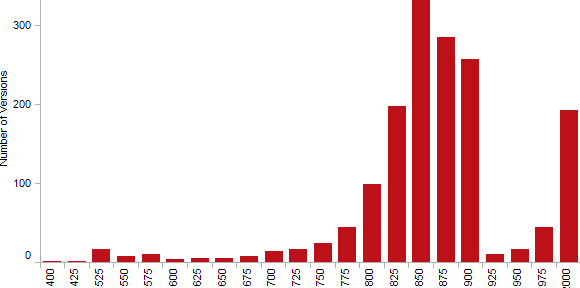One’s approach to Bible study has great influence on a person’s views about God and our relationship with him. The set of guidelines I prefer and recommend would be what’s generally known as the inductive bible study method. I find it’s a great way to let the text speak for itself before applying any pre-concieved ideas that may warp its intended, actual meaning. Of course, no single study method must be dogmatically practiced as long as the approach does not impose outside influences that may skew our interpretations (a.k.a “Sola Scriptura”).
Likewise, a person’s approach to understanding any other data set has a huge bearing on their eventual understanding of what that data represents. A flawed approach tends to produce false or misleading statistics, granting that field of study a special category coined by Mark Twain in his famous line: “There are three kinds of lies: lies, damned lies and statistics.” On a blog that I regularly visit, Flowing Data, Nathan Yau does a good job of giving examples of the right and wrong ways to analyze and present data truthfully. The recent release of his book Visualize This promises to be as good a resource as his blog. It comes along with a wonderful video (below) that illustrates some important points I’d like to expand on.
I couldn’t have said it better myself. The parallels between this approach to statistics and sound hermeneutics are immediately apparent. Let’s walk through each step and discuss how it corresponds to inductive Bible study and how I believe we can improve upon some areas.
- Get Your Data. Normally we choose some passage that is manageable in the time we’ve set aside for study. When studying an entire book, it must be broken into smaller segments. This is a good way for individuals to dig really deep and meditate on certain points, but it can be inadequate and unnecessary for other purposes. Enough people over time have taken this approach, tabulated and published key information that can now be used alongside many other such resources to efficiently study the entire Bible as a whole. The data sets I’ve chosen come from renowned scholars over several centuries, now combined in one linked data set (MetaV).
- Ask a Question. Once we’ve chosen what passage(s) to pick apart, we must make some basic observations. What people, places, or time frames are mentioned? Much of this can be gleaned directly from the text, but helps such as maps or time lines are often necessary to really understand where in the world that place is or what else might have been going on in that period of history. This is why MetaV includes a year assigned to every passage and why every identifiable place is given a latitude/longitude.
- Choose your tools. These days we’re stuck with either pen and paper or study software which does a great job of putting a microscope on the text, but nothing is yet available which can handle analysis of the entire Bible. If you’re computer-savvy, you may be comfortable with various spreadsheets, databases, or statistical computation tools, but let’s face it – not everyone just loooves to do stats in their spare time!
- Explore. This goes along with the observations you may have when asking some basic questions, but now it may be expanded to look for trends, patterns, and differences. Like the video points out, it’s useful to compare things according to categories, space, and time. The only real way to do this on a scale larger than a chapter or two is to take each place mentioned in the passage and find it on a map (hopefully one that corresponds with the time period you’re studying) or take a similar approach to finding/plotting events through time. To help in that regard, you may find this interative visual to be useful. On a smaller scale, highlighting key elements by marking them with colors and shapes can help you identify repeating or contrasting phrases. Wouldn’t it be nice, though, if your study tools did that for you, allowing one to apply this to everything in the Bible at once so you can spend more time thinking and less time marking? I think that day is fast approaching.
- Get your story. Once you have some idea of what’s being emphasized, compared, or explained, it’s time to put it all together. What does this text actually mean? How does it relate to other stories? How does it relate to your own life?
- Design your visual. It’s just not enough that you understand it. You want to share what you’ve learned…but how? How might you communicate key points in a meaningful, truthful way without simply reciting the text or handing over a list of raw data? This is another reason why most analysis, both biblical and otherwise, is limited to smaller, more manageable bites. It’s a fairly unique skill set to handle large volumes of facts and communicate them in a way that isn’t overwhelmingly complex or else too watered-down for the sake of simplicity. I am finding more and more folks out there like Nathan Yau who are teaching others these skills and I’m learning a great deal from their online resources. I sincerely hope that the visuals on this blog do a decent job of that for you as well.
This is just one of the ways that I believe MetaV can be applied to broaden our understanding – taking the Bible as a whole, seeking common or diverging elements while remaining true to the intent of each individual passage. If you’re looking for other ways to understand the data in MetaV, keep checking this blog for upcoming visualizations or do what I do: find sites like Flowing Data to get some ideas and “how-to” articles. Then, let me know what you come up with by leaving your comments below.

